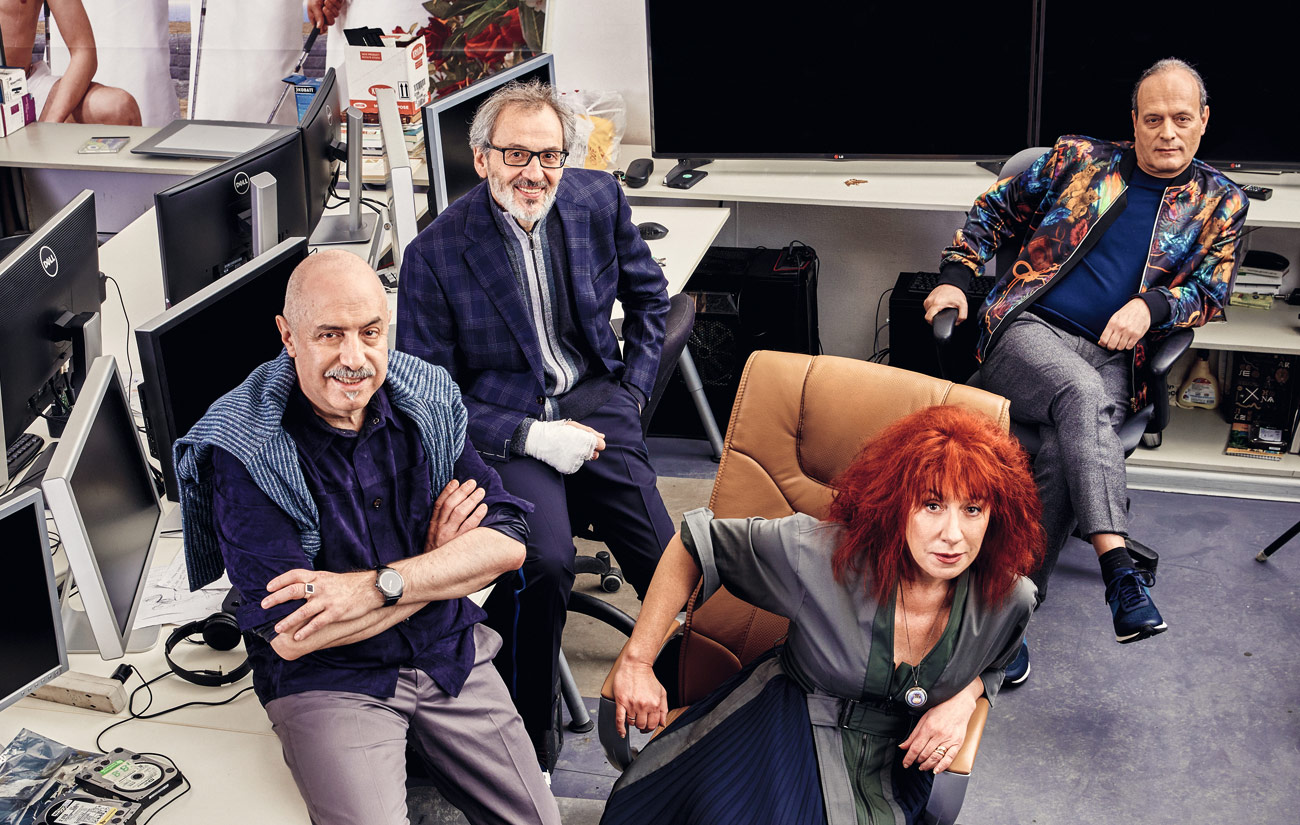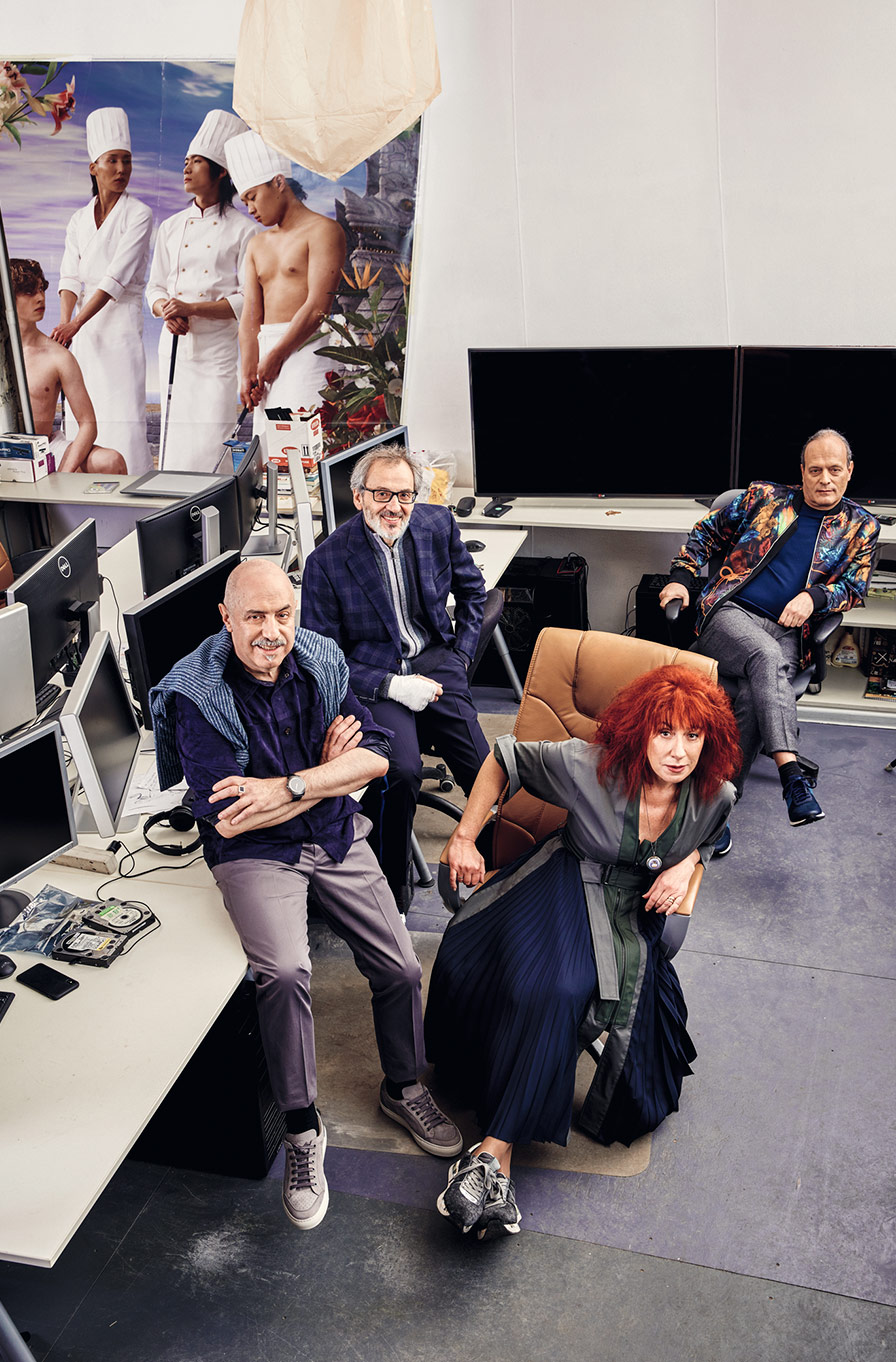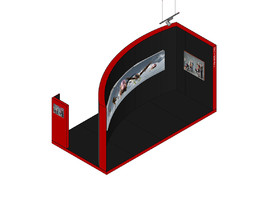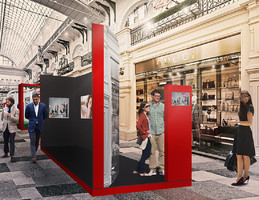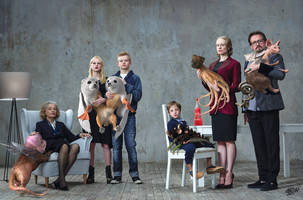
The АES+F was established in 1987. The group was formed by painters Tatiana Arzamasova, Lev Evzovich, Evgeny Svyatsky, and photograph Vladimir Fridkes who joined the group in 1995. The group achieved worldwide recognition and acclaim after their Last Riot multi-channel video installations project in the Russian Pavilion at the 2007Venice Biennale. Their art show exhibiting the Liminal Space Trilogy including Last Riot (2007), Feast of Trimalchio (2009), and Allegoria Sacra (2011) premiered to long queues of visitors at the Moscow Manege Exhibition Center. The trilogy was also on display at the Martin-Gropius-Bau, Berlin, and many more museums worldwide. In 2015 the АES+F Group was awarded the Pino Pascali Award for Allegoria Sacra. The same year they created an original painting Family Portraits with Chimeras for the cover of BoscoMagazine – a continuation of Inverso Mundus. It was first shown at the 56th Venice Biennale (2015). Since then, the Inverso Mundus project was presented at different venues in Europe, USA, India, and Australia. In 2018-2019, the artists presented the Inverso Mundus film at the first Bangkok Art Biennale. Multimedia theatrical scenery and costume design were provided by the AES+F Group for the production of Puccini’s Turandot at the Teatro Massimo of Palermo in January 2019.
Family Portraits with Chimeras
Fall 2015. From Inverso Mundus project, digital collage, 2015.

Family Portraits with Chimeras was created for the cover of the BoscoMagazine primarily in the style of the AES+F Inverso Mundus project presented in the parallel program of the 56th Venice Biennale as a large-scale video installation. Each member of the family has his own darling inner chimeras who guard the identity of each character and make his or her personality blossom.
Pavilion. Inverso Mundus

The sarcastic fantasy Inverso Mundus (“The World Upside Down”) is a multimedia project created in 2015 with the use of technologies developed by the AES+F art group. Inverso in Italian means “the opposite, reverse”; Mundus is “the world” in Latin. The narrative of the film depicts the picture of the world that is beautiful and full of misbeliefs. The inspiration came from the tradition of European “luboks”, popular prints of the 13-14th centuries. The artists mixed the nonsense of modern life with the aesthetics of a Medieval carnival. A social Utopia turns paupers into rich men, victims into executioners, while chimeras become pet-like creatures. Inverso Mundus is the world where the Apocalypse is merely an amusement.


